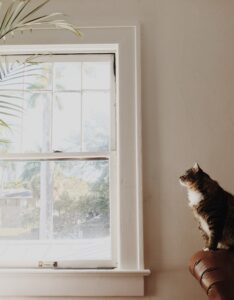Light pollution refers to excessive or improper artificial outdoor lighting that interferes with night and day’s natural rhythm.
Too much light pollution interrupts the natural lighting process. It can have many significant consequences, including increased energy consumption, disruption of ecosystems, adverse health effects on flora and fauna (including humans), and interrupting human activities such as astronomical research. Light pollution can impact the natural world’s health as drastically as levels of other human-made pollutants, such as hydrocarbons.
In most discussions, we consider light pollution for how it changes the natural lighting of the environment. For example, in and around big cities, it can be hard or impossible to see a single star, even in the dead of night. It is akin to having a conversation with a soft-spoken friend while someone blares loud music in the next room. Although the sun goes down, there exists no real night. Humanity has come up with brilliant, innovative, and energy-efficient ways of illuminating the darkness. While the science of illumination has undoubtedly benefited us in countless ways, science is now revealing why it is essential to understand the consequences of so much illumination.
Why is it essential to maintain natural light?
Changing the natural light of an environment may dramatically affect the plant’s and animal’s lives; indeed, it can even change the weather. Life has photosensitivity, so it may anticipate and adapt to the changing seasons caused by the sun’s proximity to the Earth. Metabolic processes such as leaves changing colours are direct responses to the type of light in the environment.
How are these natural processes affected by light pollution?
The natural state of life and its various metabolic processes can be disrupted by too much, too little, or the wrong kind of light. Consider, for example, the effect that blue-light exposure has on human sleep cycles. Numerous scientific studies have confirmed that a leading cause of insomnia is exposure to the blue spectrum of light emitted from the screens of our smartphones, computers, and TVs. It is the type of light emitted by these devices that tricks our brains into thinking it is still daytime when we would like to sleep. We are as responsive to subtle changes in the amount or type of light as a plant that aims its blooms towards the sun.
Employee Productivity
We know that daylight access impacts mental well-being; look to seasonal affective disorder (SAD) for evidence. There are also compelling research findings of the human impacts of access to views outside, a close corollary to daylight access.
Studies were conducted within the offices of the municipal utility district in California. The first study tested the performance of 100 workers in an incoming call centre. The second study looked at 200 other office workers’ performance using a series of short cognitive assessment tests. At the end of the testing, it was clear that views to the outside from an employee’s workstation had a direct effect on workers’ performance:
“A better view was the most consistent explanatory variable associated with improved office worker performance, in six out of eight outcomes considered. Views from a workstation were rated for both primary views (angular size of window view while looking at the desktop computer monitor) and break views (angular size of view from other seated vantage points in the cubicle). Both views were rated on a scale of 0-5 first based on size, and secondarily by vegetation content. Workers in the Call Center processed calls 7% to 12% faster when they had the best possible view versus those with no view. Office workers performed 10% to 25% better on tests of mental function and memory recall when they had the best possible views versus those with no view.” (Windows and Offices: A Study of Office Worker Performance and the Indoor Environment.)
Not only did the study find that views to the outdoors boosted employee performance, but it also found that workers with the best views reported better health conditions. In contrast, reports of increased fatigue were most strongly associated with a lack of view.
Are you interested in learning more about how we can help you improve your view? Be in touch for a free consultation.




